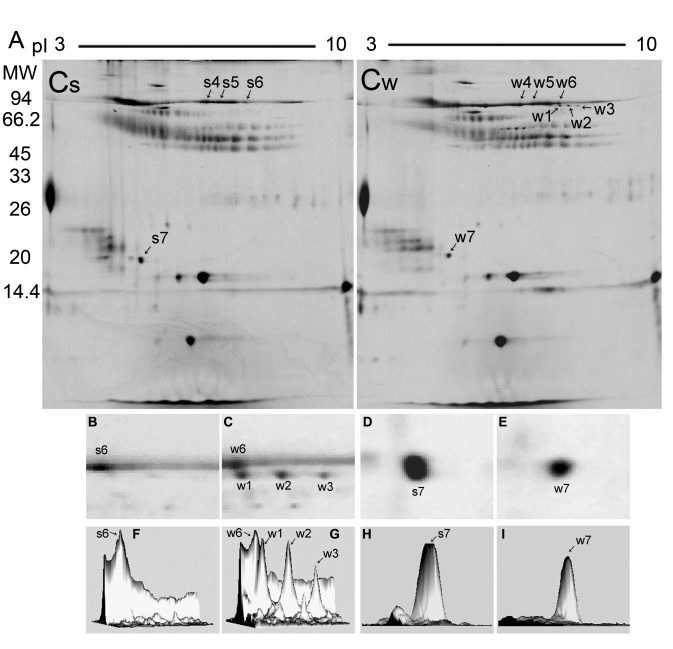Figure 2.
Comparison of 2-DE Coomassie-stained protein profiles and differential expression spots of camel tears between summer and winter. A: Tear proteins (100 μg) in the summer (Cs) and in the winter (Cw) were separated on first-dimensional pH 3–10 linear IPG gels (13 cm) and second-dimensional 13% vertical slab gels. The relative MW is given on the left, while the pI is given at the top of the figure. The spots marked by arrows and numbers were cut and digested, and then identified using MALDI-TOF/TOF-MS. B-I: Protein spots w1, w2, w3 and s7, and w7 with different volume intensities are displayed in the enlarged spot views of 2-DE images (B-E) and as three-dimensional images obtained by Melanie 4.0 software (F-I). Spots w1, w2, w3, w4, w5, w6 and s4, s5, and s6 were identified as LF and spots s7 and w7 were characterized as VMO1 homolog. B, D, F, H: The summer group (Cs); C, E, G, I: The winter group (Cw).

